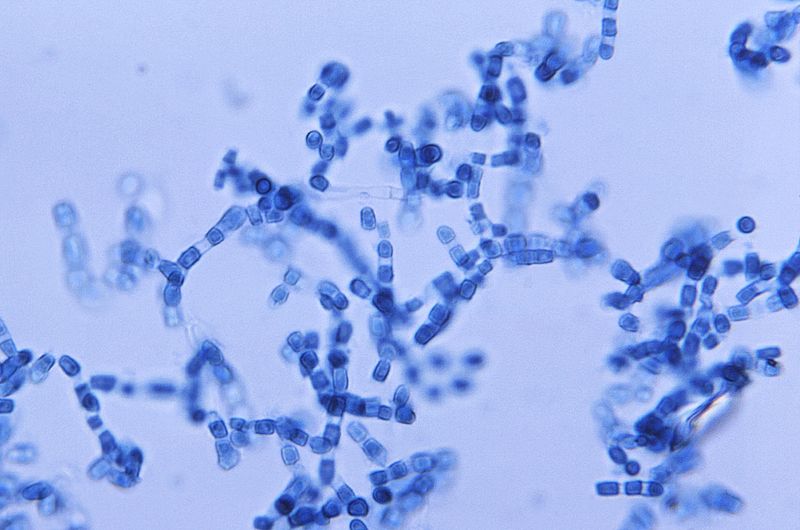Climate change is causing fungal pathogens to spread: Here's what providers should know
Fungal pathogens that can cause various diseases will likely become more prevalent in the next 10 years thanks to climate change, according to a recent commentary.
Published in Annals of Internal Medicine, the commentary by George R. Thompson III, MD, a professor in the department of internal medicine and division of infectious diseases at the University of California, Davis, School of Medicine, and Tom Chiller, MD, MPHTM, of the CDC’s mycotic diseases branch, highlights the rising threat of endemic mycoses.

According to the authors, the most prevalent endemic mycoses in North America include blastomycosis, coccidioidomycosis and histoplasmosis, but changes in rain and temperature are affecting where endemic mycoses can thrive.
“These three fungal diseases usually inhabit specific U.S. regions conducive to their survival,” Thompson said in a press release. “Recently, we are finding more cases of these diseases outside their known areas, taking clinicians and patients by surprise.”
Though the projections suggest it will worsen, the researchers wrote that “current epidemiology indicates that expansion has already occurred.”
For example, coccidioidomycosis has been identified in Washington State, much further north of the traditionally accepted endemic region, Thompson and Chiller wrote. A recent case also popped up in Nebraska, “suggesting eastward expansion,” they added.
Because of the pathogens’ rising spread, the researchers said that clinicians who are unfamiliar with the mycoses might encounter them in their practice. It is important for clinicians to be aware of the spread because the symptoms of blastomycosis, coccidioidomycosis and histoplasmosis can be nonspecific and include cough, fatigue, night sweats, chills, fever and more. They may also cause lung infections, mimicking pneumonia.
As such, endemic mycoses can be mistakenly diagnosed as a bacterial infection. When that happens, the authors wrote that “antibiotics are frequently prescribed — often multiple times as patients fail to improve.” This course of action, they added, “exposes patients to unneeded, inefficacious prescription medications and contributes to the development of antimicrobial resistance in the community.”
“The organisms are probably much more widespread than we originally thought. There is an increasing likelihood that clinicians who are not familiar with these organisms will encounter them during their daily practice,” Thompson said in the release. “In regions where these fungal diseases flourish, doctors need to consider the diagnosis and testing for mycoses in all patients with suggestive illness.”
Thompson and Chiller also emphasized the absence of guidelines for testing and treating mycoses. Many practitioners have little experience when it comes to recognizing and treating mycoses infections, they wrote, so those infected could face long periods of illness between the time they contracted the pathogen and diagnosis, which could lead to high health care costs and adverse outcomes.
The authors also discussed point-of-care diagnostics as a factor in delayed diagnosis, noting that “multiplexed platforms used for the diagnosis of respiratory infections do not include the endemic mycoses, and serum antibody and urinary antigen tests for the endemic mycoses are typically available only from reference laboratories.”
“Compounding these factors, most of the endemic mycoses are not uniformly reportable to public health agencies, frustrating attempts to define the true burden of infection,” they wrote. “Improvements in our epidemiologic understanding of disease and the ability to capture changes in disease incidence at the county level would enable directed educational efforts, public health campaigns, and quality improvement initiatives to reduce the time to diagnosis and receipt of appropriate antifungal therapy.”
In response to the spread, Thompson and Chiller suggested:
- educational efforts for both providers and patients;
- disease reporting and national surveillance of endemic mycoses;
- including endemic mycoses in future guidelines;
- exploring a pan-endemic mycoses vaccine; and
- developing point-of-care diagnostics to improve the time of diagnosis and treatment.
“This multifaceted approach to the growing problem of the endemic mycoses may help with preventive efforts and the timely recognition and treatment of these diseases,” they concluded.
References:
- Physicians urged to consider fungal infections as possible cause for lung inflammation. https://www.eurekalert.org/news-releases/971654?. Published Nov. 21, 2022. Accessed Nov. 21, 2022.
- Thompson GR, et al. Ann Intern Med. 2022;doi:10.7326/M22-2371.

